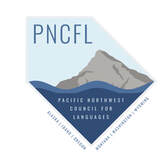|
Happy May, MALT members! I would like to start off this month by saying thank you to all who attended our Spring Conference in Great Falls. Craig Sheehy was engaging, entertaining, and demonstrated many new ways to incorporate TPRS in our classrooms. The teachers from Great Falls, led by Sara Buley, really went out of their way to make us feel welcome. Obviously it was successful because we had over 60 attendees and that is a record for a Spring Conference.
We also welcomed our two scholarship winners, Liz Schwartz from Laurel and Karen Jordan from Bozeman, and we look forward to seeing both of them again in Billings in the fall. Paul Asleson was elected to take on the duties as our new Treasurer, and I am confident he will be an excellent addition to the MALT Board. Once again Justin Woollacott from EF, and our new tour consultant for Montana, Janine Cruz, joined us to host our social on Friday evening. Leaving Great Falls I was thinking about how wonderful it is to have this opportunity for professional development, paired with conversations with our colleagues from all over the state, as we head into our last few weeks of school. Thank you again everyone, especially my fellow Board members, for all of your positive energy throughout the entire weekend. During our time together in Great Falls there was also considerable discussion about the proposed changes at the University of Montana. In April, new University President Seth Bodnar presented his, “Strategies for Distinction,” that outline a reduction of 50 full-time faculty positions. Over one-fourth of those positions will come from the English and Modern and Classical Languages faculties. As a Spanish teacher, these types of cuts alarm me. I am not an alumna of U of M, but I have seen a fairly large number of my students head to Missoula to begin their professional studies. At least one-fourth of those students planned to at least minor in Spanish. In my mind, this reduction in staff equates to reduced opportunities for my students to continue their studies in a language they have learned to love. To be fair, President Bodnar is facing an impossible task. Enrollment has decreased by almost 30% in the last 10 years. Fewer students equate to less money to fund University programs, and currently the deficit hovers in the neighborhood of $10,000,000. Those numbers don’t really allow the University the opportunity to take a passive approach; they demand action. I believe that the faculty at U of M understands this stark reality as well, even if they do not agree with many of the proposed changes in the President’s new plan. However, from the perspective of students preparing to begin their studies at the University in the fall, these changes have caused even more alarm. In an e-mail sent to the MALT Board, Jenna McCrorie, a senior at Kalispell Glacier High School, expressed this fear very well. “I was fortunate enough to be a recipient of the Presidential Leadership Scholarship to attend the University of Montana this fall, and I was planning on having the ability to double major in French and International Relations & Comparative Policy when I accepted this scholarship. The Strategy for Distinction brings forth a number of devastating cuts to the Modern and Classical Languages and Literatures department, including discontinuing majors in French, Spanish, German, Russian, Classics, Area Studies and Political Science - History. This proposal threatens my academic future, as well as the academic futures of thousands of kids who could possibly benefit from these programs.” I am positive that Jenna is not the only high school senior wondering if their attendance at U of M is the right approach for them. Even if the proposed cuts are phased in over a 3-year period, double majors often take 5 years to complete their education. What course of action does one take if the degree you want to pursue will no longer exist by the time you are ready to graduate? My guess is that some of those students will choose to go elsewhere, which will continue to compound the low enrollment issue. In addition to these complex issues, at some point this month Bodnar will present his new mission statement for the University to the Board of Regents. He has indicated that he would like to see more focus on the sciences as U of M moves forward. Is it really that easy to re-brand a university? For over 100 years, our state university in Missoula has been known as a liberal arts school. Can the reputation of a school really be changed by a few words on paper? Or, does President Bodnar’s plan have the potential to cause more enrollment problems as students who planned to pursue degrees in English and Modern and Classical Languages go elsewhere to matriculate where their chosen programs continue to receive the type of support that have always been the strengths of U of M? At this point, I don’t really think that the university can afford to risk losing any more potential students. As language teachers, all of us should be very concerned about how these changes could affect our students. How exactly does a student who graduates with a degree in “European Studies” get a job teaching Spanish? What guarantees are being made to the current students at U of M that the degree they are working on today will still be available when they are ready to graduate? There is still time to share your thoughts with the Board of Regents before their scheduled meeting on May 23rd and 24th at Montana State University-Northern in Havre. If you would like to e-mail any of the board members, this link will take you to the web page with the list of all of the members. Cuts to programs will still occur; the budget deficit is just too large to be able to maintain the status quo. The best we can all hope for is that the programs that have built University of Montana’s reputation as a fine liberal arts institution will be allowed to serve our students for years to come. - Alice Nation, MALT President
0 Comments
Leave a Reply. |
|
All photographs have been generously provided by our members. Or are sourced from Weebly.
|
Proudly powered by Weebly
|
 RSS Feed
RSS Feed


